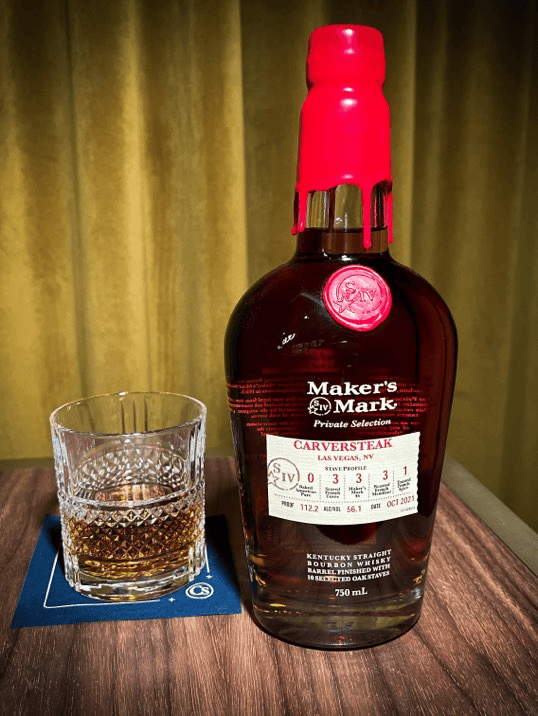Whiskey 101: How Whiskey Is Made and How To Pair It With Your Food

The process of making superb alcoholic beverages is detailed and time-consuming, and how whiskey is made is no exception. The whiskey-making process originated hundreds of years ago, and over the centuries, has been refined into an art.
Let’s explore the production of whiskey, and how to pair it with your dinner for an exceptional dining experience.
How Is Whiskey Made: What Ingredients Are Used?
Each country that produces whiskey sets specific guidelines that determine which ingredients are used in the production process. Some countries prohibit whiskey producers from adding enzymes, while others allow producers to add caramel coloring.
Bourbon whiskey must have corn as the primary ingredient. Rye is the primary ingredient in rye whiskey, while corn is the primary ingredient in Tennessee whiskey.
Depending on the production location, other ingredients that may be used include barley and wheat. Yeast is added during the fermentation process.
What Is Mashing, and Why Is It Important?
Whiskey producers must put ingredients through the malting process before the mashing process begins if they’re making malt whiskey. This involves immersing barley in warm water and stimulating its growth. During this time, the barley’s starches convert into sugars. Next, the barley is dried in a kiln and ground into flour.
Mashing refers to the process of turning starches into the sugars used to make whiskey. The ingredients used for bourbon whiskey are combined and boiled in a cooker.
What Happens During Fermentation?
After boiling, producers combine the cooled mixture with yeast and begin the fermentation process. The ingredients are combined in washbacks and left for three days, allowing the yeast sufficient time to interact with the sugars and convert them into carbon dioxide and alcohol.
What Is Distillation, and How Does It Work?
Distillation follows the fermentation process and typically involves two rounds of distillation, with the first separating the alcohol from the other components. The mix is heated and turned into vapor. The vapors are directed into a condenser and converted back into liquid. The distilled alcohol transfers to a doubler. At this stage, unwanted compounds may be extracted, and the alcohol is tested to ensure it meets flavor and quality standards.
What Is the Role of Aging in Whiskey Production?
Aging plays a crucial role in whiskey production, and the location of production affects the aging process. Typically, Canadian whiskey is aged for a minimum of six years. Scotch whiskey involves at least three years of aging in oak casks. In the U.S., bourbon whiskey must be aged in white oak barrels, and these barrels are burnt so that the contents are in direct contact with charcoal while aging.
The type of casks used affects the flavor, fragrance, and texture of the whiskey produced.
How Is Whiskey Filtered and Bottled?
The filtering and bottling process is handled by the company producing the whiskey. This ensures adherence to production requirements and the quality of the finished product.
Once the whiskey has aged, it may be kept pure, blended with whiskey from other casks, or blended with other types of whiskey. Blending whiskey allows producers to create distinct flavor profiles.
Once it’s ready for bottling, the whiskey is poured into sieves and filtered. The filtering removes any unwanted elements. For example, whiskey stored in charred barrels may contain bits of charcoal. The filtering removes those pieces to ensure only whiskey enters the storage containers. Next, the producers fill glass or PET (polyethylene terephthalate) bottles with whiskey and seal the bottles. The bottles are labeled and then shipped to consumers.
What Whiskey Options Does Carversteak Offer?
Carversteak offers exceptional whiskey from around the world. When you explore our whiskey guide, you’ll note we offer some of the most popular whiskeys available, including the following:
- American single malt
- Bourbon
- Canadian whiskey
- Irish whisky
- Japanese whisky
- Rye
- Tennessee whiskey
- Scotch
In addition to popular brands, such as Old Fitzgerald, Carversteak offers an exclusive, custom whiskey produced by Maker’s Mark that you won’t find anywhere else.
How Does Carversteak Pair Whiskey With Our Menu?
As we’ve established from the production process, whiskey’s flavor and texture depends on the ingredients and aging process. Some whiskeys have a smooth texture, while others are strong. Flavor profiles feature a range of options, from vanilla to caramel to smoked maple.
Offering a variety of whiskey ensures that there’s a whiskey that perfectly complements every item on our menu. When you explore our menu, our servers can recommend whiskeys that will enhance the flavors and enrich your dining experience.
Whiskey is a superb accompaniment to steak. There are many reasons why steak and whiskey match, starting with their complementary flavors. Steak has a smoky flavor because of the way it’s cooked, and that matches perfectly with a smoky whiskey.
Whiskey cleanses your palate, allowing you to savor the undiluted flavor of your steak when paired with whiskey. Sipping whiskey between bites ensures you maximize your enjoyment of a rich steak’s flavors.
Dine With Carversteak Today
Whiskey is one of the oldest and most popular spirits available. Its popularity has prompted firm regulations to ensure the purity of the ingredients and production process. At Carversteak, we offer superior whiskeys from reputed producers from around the globe. You can count on us to have whiskeys that complement our dishes, as we understand how whiskey is made and ensure we offer our guests the best whiskeys available.
Sources:
Difford, S. (2025). Scotch Whisky.
Lüning, B. (2025). Bourbon Whiskey Production.
Tennessee Whiskey. (2025).
Whiskey. (2025).